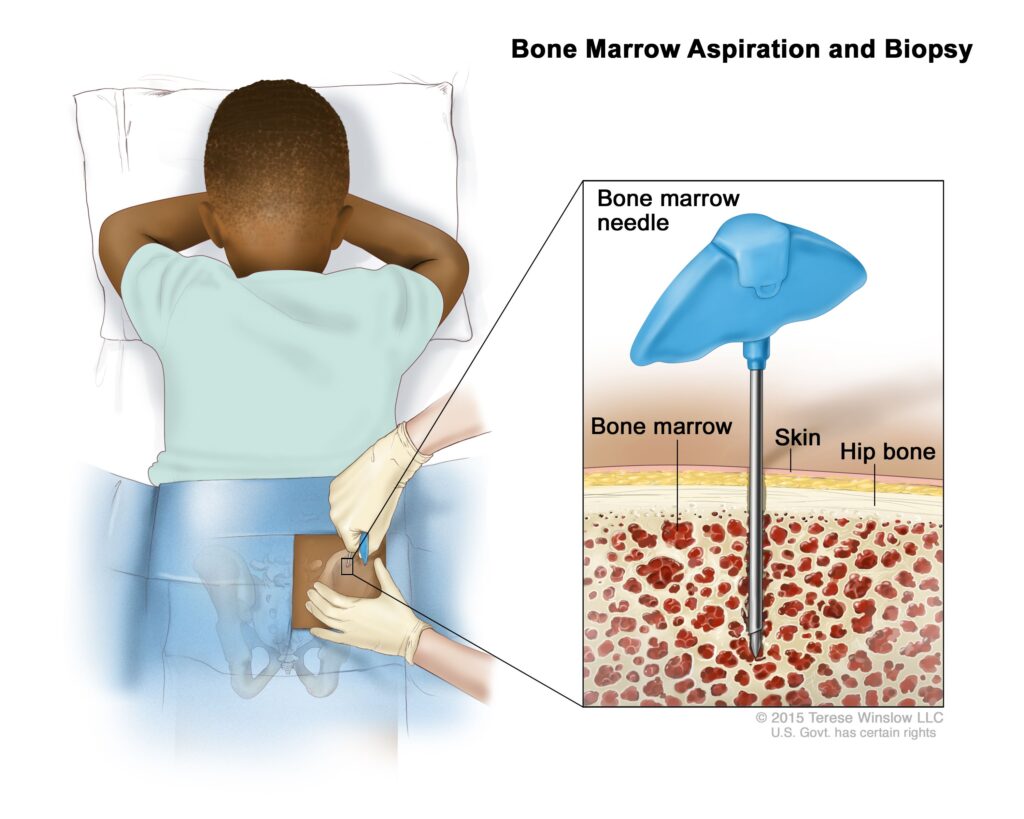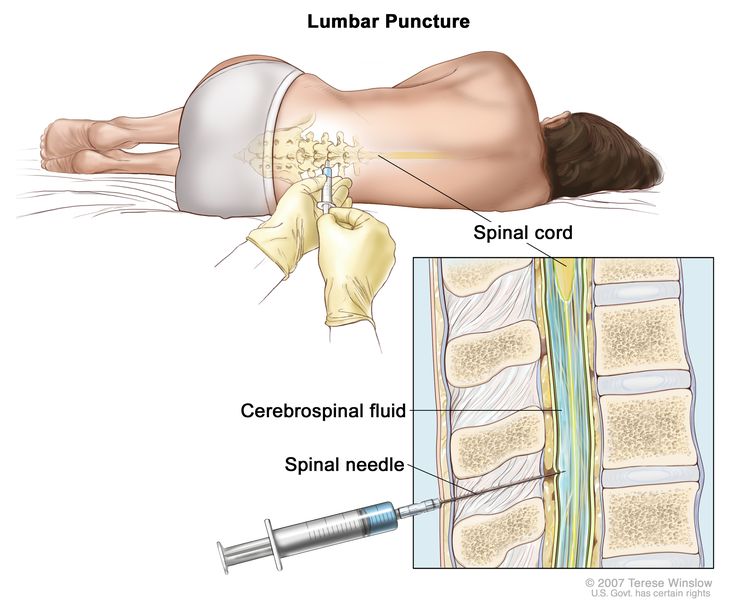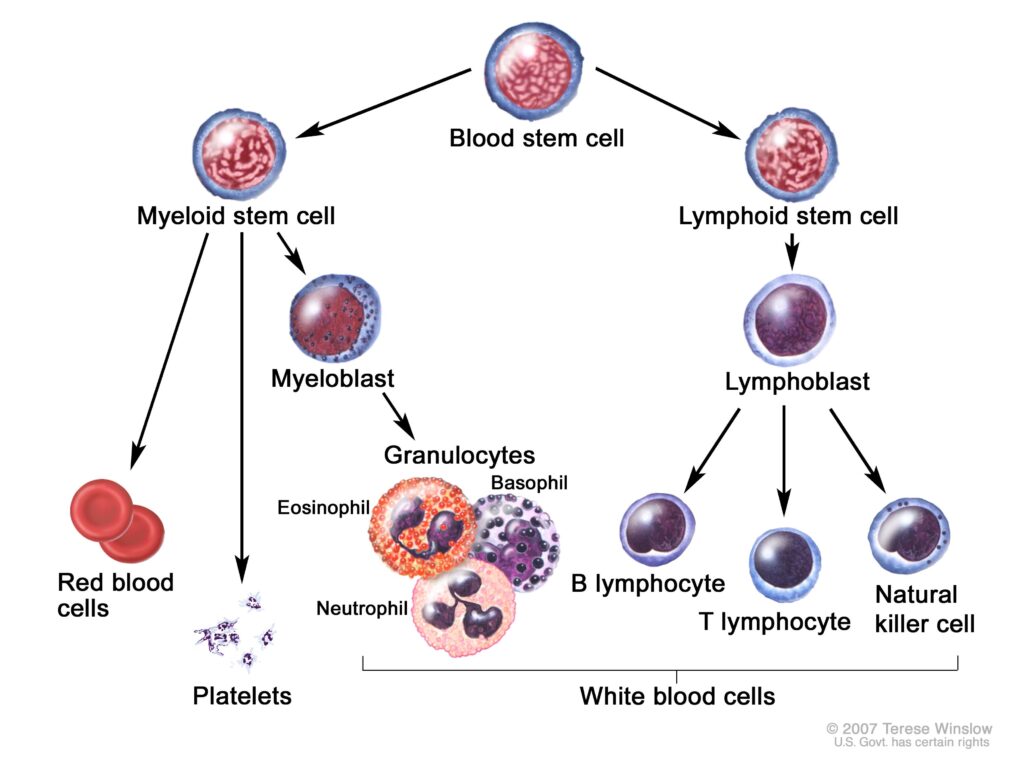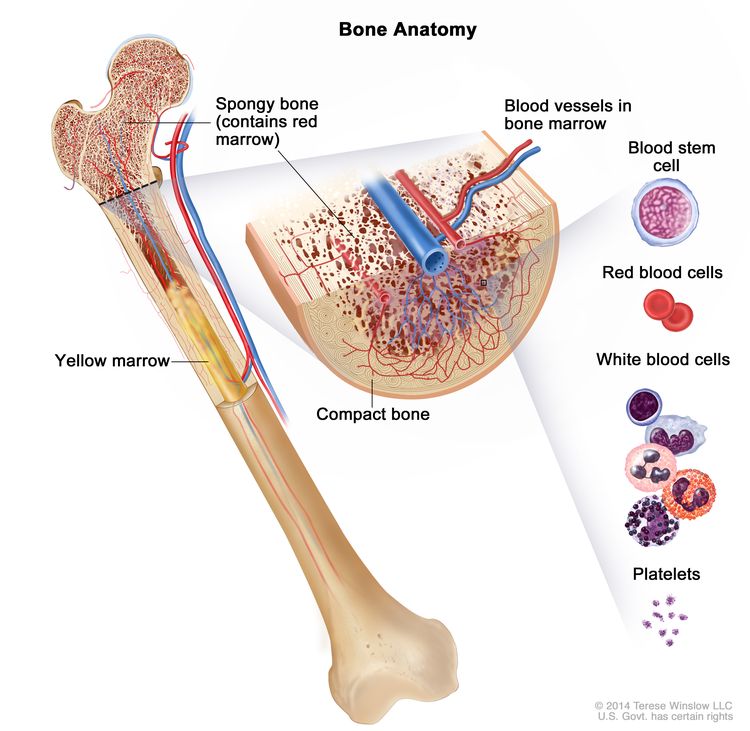In this article, you will discover important information about the diagnosis and treatment of acute lymphoblastic leukemia (ALL) in children. Acute lymphoblastic leukemia is a type of cancer that affects the white blood cells and is the most common form of cancer in children. You will learn about the symptoms to watch out for, the diagnostic tests used to confirm the diagnosis, and the various treatment options available. Understanding the diagnosis and treatment of ALL in children is crucial for early detection and effective management of this serious illness.

Types of Acute Lymphoblastic Leukemia
Acute Lymphoblastic Leukemia (ALL) is a type of cancer that affects the blood and bone marrow. There are three main types of ALL: B-cell ALL, T-cell ALL, and Mixed lineage ALL.
B-cell ALL is the most common type of ALL, accounting for about 70-80% of cases. It occurs when the cancer starts in the B-cells, which are a type of white blood cell that produce antibodies to help fight off infections.
T-cell ALL occurs when the cancer starts in the T-cells, which are another type of white blood cell that plays a key role in the immune system. This type of ALL accounts for about 15-25% of cases.
Mixed lineage ALL is a rare type of ALL that occurs when the cancer cells have characteristics of both B-cells and T-cells. It accounts for about 5% of cases.
Each type of ALL may have different characteristics and require tailored treatment approaches. Therefore, accurate diagnosis and classification are essential for determining the most effective treatment plan.
Symptoms of Acute Lymphoblastic Leukemia
The symptoms of ALL can vary from person to person, but there are some common signs to look out for.
Fatigue is a common symptom of ALL, as the cancer cells can disrupt the normal production of healthy blood cells, leading to anemia.
Frequent infections can also be a sign of ALL, as the cancer cells can weaken the immune system, making it harder for the body to fight off infections.
Fever is another common symptom, as the body’s immune response may be heightened due to the presence of cancer cells.
Easy bruising or bleeding may occur due to a decrease in the number of platelets, which are responsible for clotting the blood.
Bone pain may be experienced, as the cancer cells can infiltrate the bone marrow, causing discomfort.
Enlarged lymph nodes or liver/spleen may be noticeable as the cancer cells can accumulate in these areas.
Weight loss may occur due to a decreased appetite and the body’s increased energy requirements as a result of the cancer cells.
Other symptoms can include headaches or vomiting, pale skin, and joint pain. It is important to consult with a healthcare professional if experiencing any of these symptoms to determine the underlying cause.

Diagnostic Tests for Acute Lymphoblastic Leukemia
To diagnose ALL, a series of tests may be performed. These tests help evaluate the blood and bone marrow, as well as identify specific characteristics of the cancer cells.
A complete blood count (CBC) is a test that measures the number and quality of different blood cells. Abnormalities in the CBC, such as low levels of red and white blood cells and platelets, may indicate the presence of leukemia.
Bone marrow aspiration and biopsy involve the collection of a sample of the bone marrow to analyze the presence and characteristics of cancer cells. This test is essential for confirming the diagnosis of ALL.
Immunophenotyping is a laboratory test that identifies the specific proteins on the surface of the cancer cells. This helps determine the subtype of ALL and guides treatment decisions.
The cytogenetic analysis evaluates the chromosomes within the cancer cells and identifies any abnormalities. Certain chromosomal changes can influence the prognosis and treatment options for ALL.
Molecular testing involves the analysis of specific genes within the cancer cells. This helps identify genetic mutations that may be targeted by certain treatments.
A lumbar puncture, also known as a spinal tap, may be performed to check for the presence of cancer cells in the cerebrospinal fluid, which surrounds the brain and spinal cord. This is important as ALL can spread to the central nervous system.
Staging and Risk Classification
Once the diagnosis of ALL is confirmed, staging and risk classification are important steps to determine the extent of the disease and guide treatment decisions.
Several criteria systems are used to stage and classify ALL, including the National Cancer Institute (NCI) criteria, Children’s Cancer Group (CCG) criteria, and Berlin-Frankfurt-Münster (BFM) criteria. These systems take into account factors such as the age of the patient, the white blood cell count, and the presence of certain genetic abnormalities.
Using these criteria, ALL is classified into different risk groups, including standard-risk, high-risk, and very high-risk. The risk classification helps determine the intensity of treatment and the likelihood of achieving remission.
It is important to note that each patient’s individual characteristics and response to treatment also play a role in determining the risk and prognosis.

Treatment Options for Acute Lymphoblastic Leukemia
The treatment of ALL typically involves a combination of different therapies tailored to each patient’s specific needs. The main treatment options for ALL include chemotherapy, corticosteroids, targeted therapy, radiation therapy, stem cell transplant, and supportive care.
Chemotherapy is the mainstay of treatment for ALL. It involves the use of powerful drugs to kill cancer cells or prevent their growth. Chemotherapy can be given orally, intravenously, or through a lumbar puncture.
Corticosteroids, such as prednisone and dexamethasone, are commonly used in combination with chemotherapy. They help destroy cancer cells and reduce inflammation. However, they may have side effects that need to be carefully managed.
Targeted therapy is a newer approach that focuses on specific molecular targets within the cancer cells. Monoclonal antibodies, tyrosine kinase inhibitors, and chimeric antigen receptor (CAR) T-cell therapy are examples of targeted therapies used in the treatment of ALL.
Radiation therapy involves the use of high-energy X-rays or other types of radiation to kill cancer cells. It may be used in specific cases, such as when leukemia cells have spread to the central nervous system or when preparing for a stem cell transplant.
A stem cell transplant, also known as a bone marrow transplant, involves replacing the patient’s diseased bone marrow with healthy stem cells. This can help rebuild the blood and immune system following intensive chemotherapy or radiation therapy.
Supportive care plays a crucial role in managing the side effects of treatment and improving the overall well-being of the patient. This can include blood and platelet transfusions, antibiotics and antifungal agents to prevent and treat infections, pain management, nutritional support, and psychosocial support.
Chemotherapy for Acute Lymphoblastic Leukemia
Chemotherapy treatment for ALL is often divided into several phases: induction therapy, consolidation therapy, maintenance therapy, and central nervous system (CNS) prophylaxis.
Induction therapy is the initial phase of treatment aimed at rapidly reducing the number of leukemia cells in the body. It typically involves the administration of several chemotherapy drugs over a period of several weeks.
Consolidation therapy follows induction therapy and aims to further eliminate any remaining leukemia cells. It usually involves the administration of more intensive chemotherapy and additional treatments, such as radiation therapy or stem cell transplant.
Maintenance therapy is a long-term phase of treatment that helps prevent the recurrence of leukemia. It involves lower doses of chemotherapy given over an extended period, usually several months to years.
CNS prophylaxis is an important component of ALL treatment, as the cancer cells can spread to the central nervous system. It typically involves the administration of chemotherapy directly into the cerebrospinal fluid through a lumbar puncture.
The specific regimen and duration of each phase of chemotherapy may vary depending on the patient’s risk classification and individual response to treatment. It is important to closely follow the treatment plan outlined by the healthcare team.

Corticosteroids in Acute Lymphoblastic Leukemia
Corticosteroids, such as prednisone and dexamethasone, are commonly used in the treatment of ALL. These medications have anti-leukemic effects and are often given in combination with chemotherapy.
Prednisone is a type of corticosteroid that is well-tolerated and commonly used in the initial phase of treatment. It helps to kill leukemia cells and suppress the body’s immune response, which can reduce inflammation and swelling.
Dexamethasone is another corticosteroid that may be used in combination with or as an alternative to prednisone. It has similar effects but may be more potent and have a different side effect profile.
Possible side effects of corticosteroids can include increased appetite, weight gain, mood changes, insomnia, high blood pressure, increased blood sugar levels, and increased risk of infection. It is important to work closely with the healthcare team to monitor and manage any side effects that may occur.
Targeted Therapy for Acute Lymphoblastic Leukemia
Targeted therapies are a newer approach in the treatment of ALL that focus on specific molecular targets within the cancer cells. These therapies are designed to be more selective and precise in killing cancer cells while minimizing damage to healthy cells.
Monoclonal antibodies are a type of targeted therapy that can recognize and bind to specific proteins on the surface of cancer cells. This can help activate the body’s immune system to destroy the cancer cells.
Tyrosine kinase inhibitors are another type of targeted therapy that block certain enzymes within the leukemia cells, preventing them from growing and dividing. These inhibitors can specifically target genetic mutations within the cancer cells.
Chimeric antigen receptor (CAR) T-cell therapy is a groundbreaking treatment that involves modifying a patient’s own T-cells to recognize and destroy cancer cells. This personalized therapy has shown promising results in the treatment of ALL, particularly in patients who have not responded to other treatments or have relapsed.
The specific targeted therapies used in the treatment of ALL may vary depending on the individual characteristics of the cancer cells and the patient’s overall health. Clinical trials may also offer access to new targeted therapies being investigated for the treatment of ALL.

Radiation Therapy for Acute Lymphoblastic Leukemia
Radiation therapy may be used in the treatment of ALL in specific cases, such as when leukemia cells have spread to the central nervous system or when preparing for a stem cell transplant.
Cranial radiation therapy is a type of radiation therapy that is directed at the head and neck region. It may be used to treat or prevent the spread of leukemia cells to the brain or spinal cord.
Total body irradiation is a type of radiation therapy that involves treating the entire body with radiation. It is typically used to prepare the body for a stem cell transplant, as it helps to destroy any remaining leukemia cells and suppress the immune system.
Radiation therapy is typically delivered using external beam radiation, where a machine directs the radiation toward the body. The treatment is carefully planned and delivered by a specialized radiation oncology team to minimize side effects and maximize effectiveness.
The side effects of radiation therapy can include fatigue, skin changes, hair loss in the treated area, and an increased risk of long-term complications, such as secondary cancers. The healthcare team will closely monitor and manage any side effects that may occur.
Supportive Care for Acute Lymphoblastic Leukemia
Supportive care plays a crucial role in the overall management of ALL and focuses on minimizing the side effects of treatment, promoting overall well-being, and improving quality of life.
Blood and platelet transfusions may be necessary if the levels of red blood cells and platelets are low. These transfusions help improve energy levels, prevent bleeding, and support the body’s ability to function properly.
Antibiotics and antifungal agents may be prescribed to prevent and treat infections, as the immune system may be weakened during treatment for ALL. These medications help fight off bacteria and fungi that can cause serious complications.
Pain management is an important aspect of supportive care, as ALL and its treatments can sometimes cause discomfort and pain. Medications, physical therapies, and other interventions may be used to help alleviate pain and improve quality of life.
Nutritional support is essential to ensure that patients maintain adequate nutrient intake during treatment. Registered dietitians can provide personalized recommendations and help address any specific nutritional needs or concerns.
Psychosocial support is also crucial in helping patients and their families cope with the emotional and psychological challenges that can arise during treatment. This may include counseling, support groups, and access to resources that can provide additional support.
Overall, supportive care aims to not only manage the physical symptoms and side effects of treatment but also address the emotional and psychosocial needs of the patients and their families.
The diagnosis and treatment of Acute Lymphoblastic Leukemia in children involve a comprehensive approach that considers the specific type of ALL, symptoms, diagnostic tests, risk classification, and treatment options. The goal is to achieve remission while minimizing side effects and improving the overall well-being of the patients. With advancements in targeted therapies and supportive care, the prognosis for children with ALL continues to improve, offering hope for a brighter future.
Watch This Video Below
Related Terms About Diagnosis and Treatment of Acute Lymphoblastic Leukemia in Children
Acute Lymphoblastic Leukaemia Treatment, Acute Lymphoblastic Leukemia Active Treatment, Acute Lymphoblastic Leukemia After Treatment, Acute Lymphoblastic Leukemia Asparaginase Treatment, Acute Lymphoblastic Leukemia Chemotherapy Treatment, Acute Lymphoblastic Leukemia Effective Treatment, Acute Lymphoblastic Leukemia Successful Treatment, Acute Lymphoblastic Leukemia Symptoms Treatment, Acute Lymphoblastic Leukemia Treated With, Acute Lymphoblastic Leukemia Treatment Algorithm